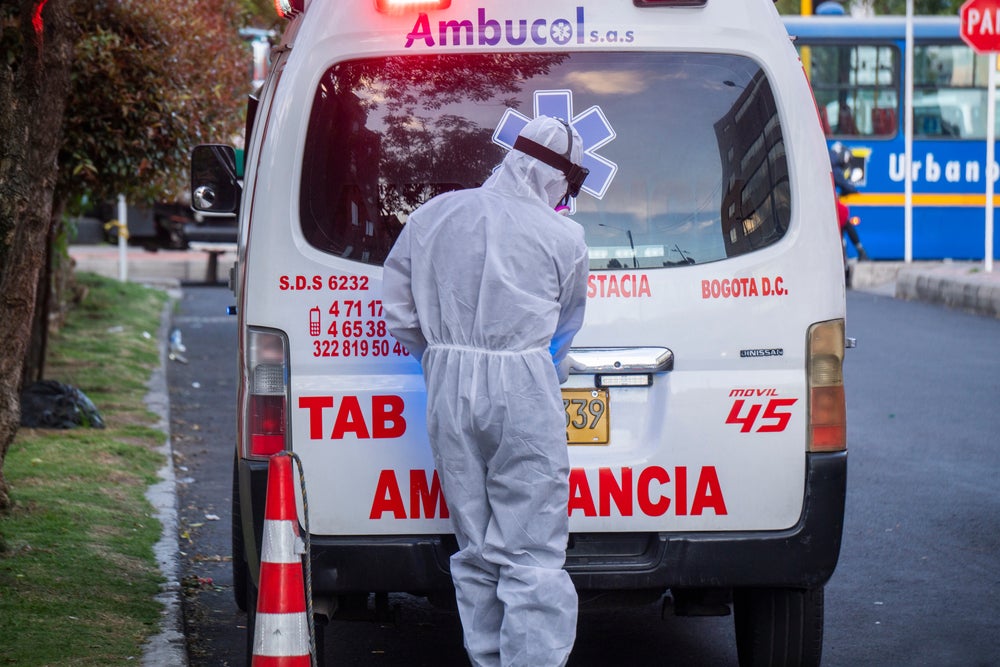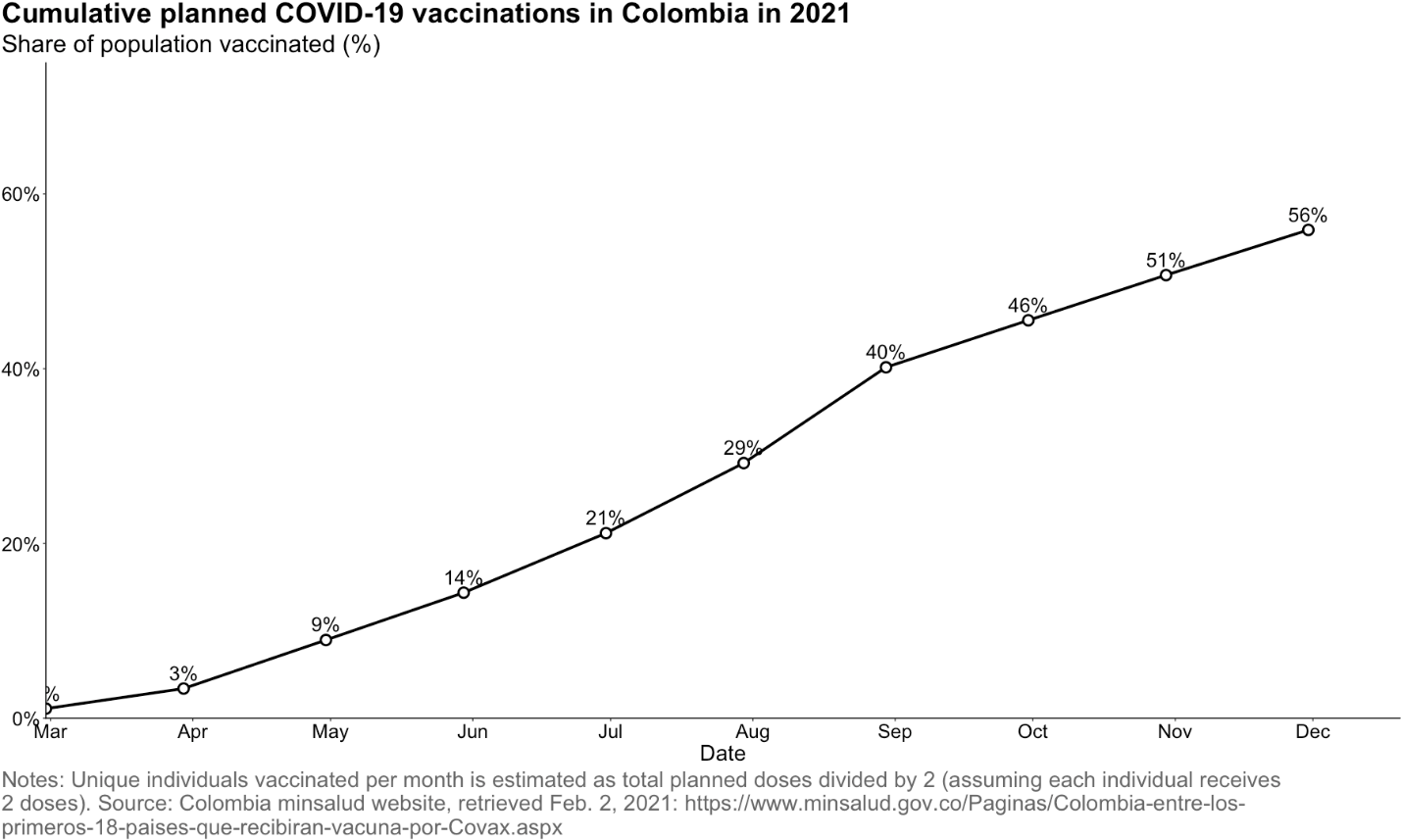 © Daniel Andres Garzon/Shutterstock
© Daniel Andres Garzon/Shutterstock
Since the beginning of the COVID-19 pandemic, many have consulted websites such as the Johns Hopkins dashboard and Our World in Data to track cases around the globe. While these websites are a useful source of information, these counts miss the vast number of people who are infected but never officially recognized as infection cases.
Seroprevalence surveys provide a much more accurate picture of true infections. They involve testing sample populations for antibodies to COVID-19 so that previous infections can be more accurately detected. In Spain, the ENE-COVID19 study carried out in April and May 2020 found that for every reported case, there were actually 10 infections in the population. In Karnataka, India, where the number of reported infection cases amounted to just 0.48% of the population, a study carried out between June and August 2020 found that in fact, 39.6% of the population had been previously infected.
These results point to the benefits of conducting seroprevalence surveys to get a more accurate picture of the pandemic. The Serotracker compilation site shows that only a few low and middle-income countries have conducted such studies for large parts of the population. Colombia is one of those countries, where the combination of seroprevalence results, excess mortality data, and a publicly released dataset of all COVID-19 cases make it possible to paint a detailed portrait of the course of the pandemic.
The seroprevalence surveys were conducted last fall in Colombian cities and towns which are home to 16 million people, roughly one-third of the country’s population. For the analysis presented here we paired the preliminary seroprevalence results with administrative data for seven cities. (When the detailed seroprevalence data are published it will be possible to verify how well the age and gender distribution of the survey samples correspond to the population. We excluded from our analysis three small towns for which the areas covered by the two data sources are not perfect matches.)
Among those seven cities, the fraction who tested positive for COVID-19 antibodies ranged from 27% to 55%, implying that 32% of the combined population of those cities had already been infected with the virus. The figure below plots the cumulative reported COVID-19 infection cases (solid black line) over time for each city while the blue point marks the estimated number of infections derived from the seroprevalence survey. The numbers in parentheses indicate the ratio of the estimated number of infections to the number of reported infection cases.
Colombia has also tracked confirmed deaths due to COVID-19. Excess mortality analysis by Colombia’s national statistical institute DANE suggests that the large majority of deaths due to the virus are reported as confirmed COVID-19 deaths in government statistics.
Dividing the cumulative number of confirmed deaths in the case dataset at the survey date by the number of infections estimated from the seroprevalence surveys yields an estimate of the Infection Fatality Rate (IFR) for each city. The point estimates of the IFR in those cities is in the range of 0.25-0.46%. The population-weighted IFR across the 7 cities is 0.36% with a standard error of 0.02%. Because most but not all deaths due to COVID appear in the case dataset, true IFRs are slightly higher than these calculations suggest.
Notes: The total 2020 population for each municipality includes only the municipal urban core (cabecara municipal excluding centros poblados y rural disperso) and encompasses all ages. The seroprevalence studies, are representative of the cabecara municipal and individuals between the ages of 5 and 80. Case and death data are reported for all ages and geographic areas of each municipality. Cumulative cases and deaths from Colombia’s case microdata (downloaded March 2, 2020) are tallied at the estimated date of infection calculated as the date of symptom onset minus 5 days. For asymptomatic cases without a date of symptom onset, the date of symptom onset was predicted using the mean duration of days between date of diagnosis and date of symptom onset for each municipality.
We can use the overall IFR estimate to evaluate the cumulative infection rate for the seven cities at a more recent date. This estimation requires the assumption that the overall IFR for the seven cities has remained constant over time. Given that the IFRs fall within a fairly narrow range, we believe that this assumption is likely to be approximately correct. Under this assumption, we can retrospectively infer the number of infections from the cumulative number of reported deaths. For example, administrative data record 27,129 deaths among all reported COVID-19 cases whose infections started on or before January 31st, 2021. Dividing these deaths by the IFR of 0.0036 [0.0033 – 0.0040], yields an estimate of the total number of ever infected in these seven cities in the range of 44-54% (95 percent confidence interval).
COVID-19 vaccinations have recently started, and the government’s announced schedule of vaccine arrivals indicates that a quarter of Colombians will be vaccinated by the end of the summer, and half may receive the vaccine by the end of the year. (Numbers shown in the above chart are based on vaccine arrivals, and actual administration of the required two vaccine doses will lag somewhat.) Given the vaccine rollout and the continued spread of infections, the share of the population in the cities either previously infected or vaccinated is likely to reach a high level over the next few months. This is probably true in other countries as suggested by several seroprevalence surveys in India.
This analysis provides hope that the end of the major phase of the pandemic may be on the horizon in the countries that have been hard hit and are rolling out vaccines. Our Colombia analysis has some caveats: it is dependent on the reliability of the seroprevalence surveys as well as the assumption of a constant IFR over time. More generally, it is important to stress that there continue to be several points of uncertainty. First, the extent to which vaccinated individuals can transmit the virus is unclear. Second, the strength and duration of immunity acquired either through prior infection or vaccinations is not clear, particularly in the face of new variants. Most worrisome, particularly for Colombia, are recent preliminary findings suggesting that the P.1 variant first identified in neighboring Manaus, Brazil can infect people who had previously been infected with COVID-19.
Consequently, Colombia and other countries must not let their guard down. We should continue to vaccinate people as fast as possible and we should all continue to follow public health measures including wearing masks in public, maintaining social distancing, and practicing hand hygiene. Additionally, the importance of obtaining an accurate picture of the state and dynamics of the pandemic is clear. Seroprevalence studies, excess deaths monitoring, and sequencing of the virus for the identification of emerging variants all will continue to be critical tools for understanding the pandemic.








Join the Conversation